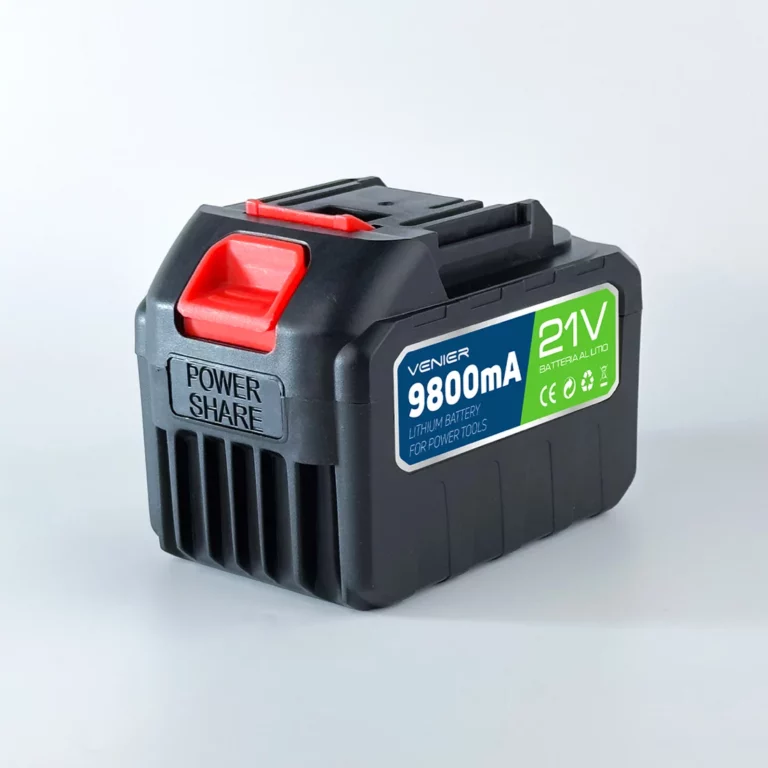
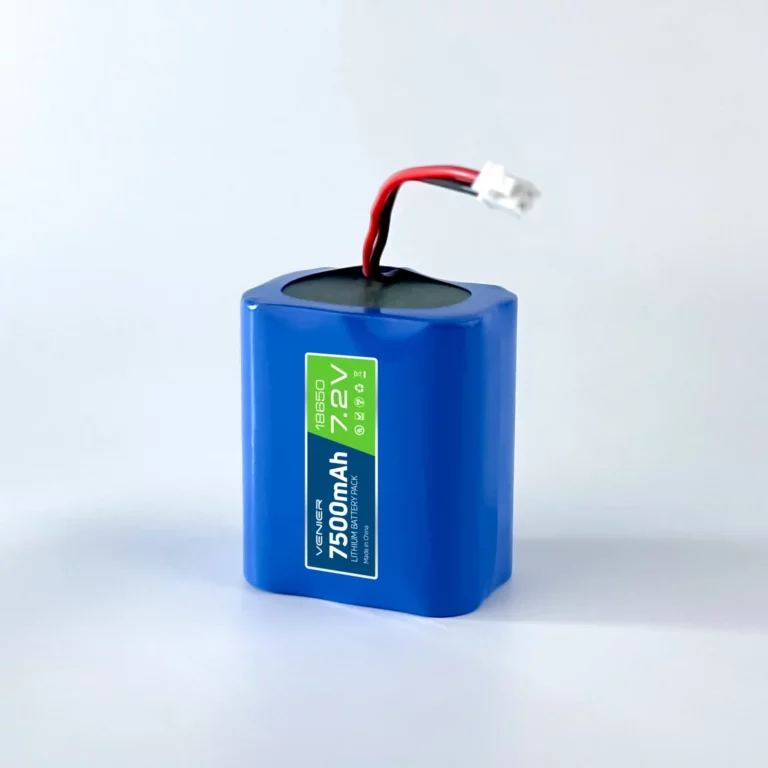
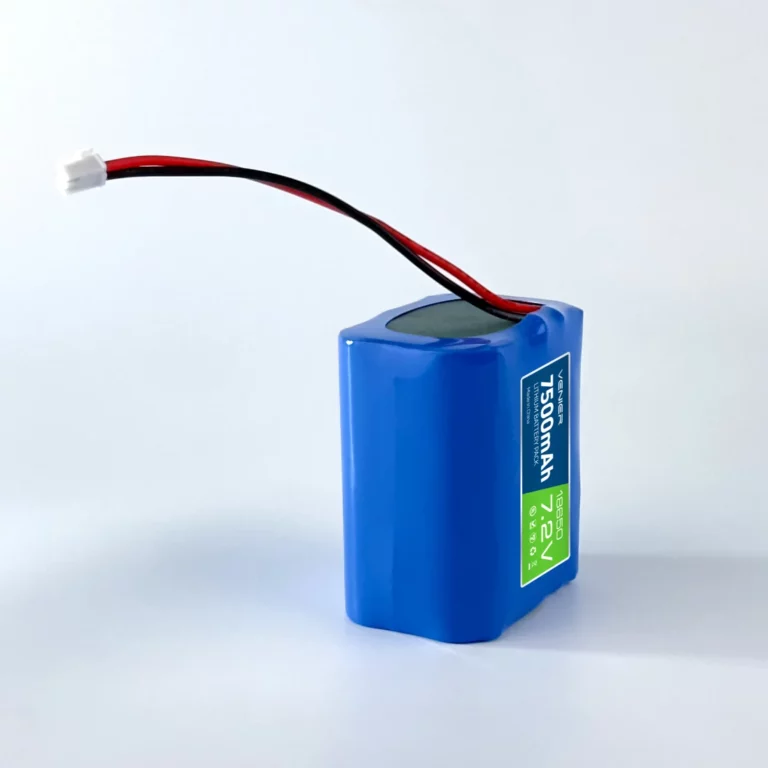
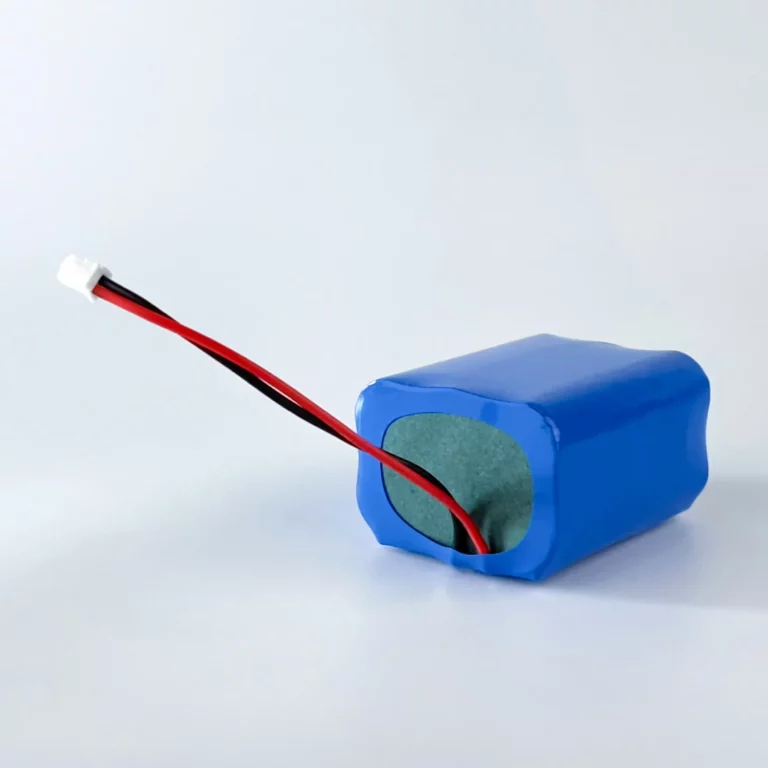
The 18650 lithium-ion battery pack is formed by spot-welding of 18650 cylindrical cells in series or parallel. The resulting battery has a high energy density and a low cost cycle life compared to other power supply options. The cylindrical cell format also shows high reliability compared to other formatting options.
The battery pack specifications make it suitable for power tools, laptops, consumer electronics and many other applications.
The battery uses a high-quality cylindrical battery with a medium weight energy density class and a medium maximum continuous current discharge class compared to other batteries.
Assembly and testing takes place at our factory in Zhongshan, China. PCM/BMS, connectors, labels, package shapes and other requirements can be adapted.
All Venier packages usually start with a free replacement warranty of 6 to 12 months or more, covering authenticity, performance, age and defects. Due to the variability of battery pack specifications, applications, and custom parts, warranties may be determined on a per-product basis.
A typical bill of materials (BOM) includes the following:
Battery cell
Nickel or other tabbing
PCB/PCM/BMS
PVC shrink wrap
Insulating paper (barley paper)
Insulating foam
Connectors and wires
Why should I choose Venier?
Thanks to our streamlined order process and new plant, Venier is the easiest way to get a low-cost lithium-ion solution.
How do I get a quote?
Fill in the relevant requirements of the quotation form on this page and click the “Get a quote for free” button to complete.
Do you provide samples?
Yes, we can usually provide samples upon request.
Can I order custom parts to be integrated into our products?
Yes. When you submit a battery pack for a quote request, specify which parts you need and any other relevant information.
Will you sign a non-disclosure agreement?
Yes, we are glad to sign a confidentiality agreement with you. Venier takes IP very seriously. You can rest assured that your intellectual property will be protected.
Can you provide UN DOT 38.3/UL/RoHS certification for our products?
Yes. We can apply for any relevant certification for your custom products. Most certifications require additional fees.
How do you ship the product?
The product is shipped from China and can be traced to almost every country in the world. We negotiate with carriers such as FedEx, UPS and DHL to ensure the fastest and cheapest service for your location. Orders weighing 100 kg or more can be shipped by sea.
Will Venier be in charge of customs clearance?
Yes, we can help you clear customs and get all the necessary documents for energy products. Depending on your location, additional charges may apply.
What’s your warranty?
All our products are guaranteed to be genuine and arrive defect free, with a 6 to 12 month full refund or exchange guarantee based on packaging specifications, and all orders include after-sales support.
For volume production, the parties negotiate a supply and quality agreement to ensure the highest standards of manufacturing and supply.
What are my different purchasing options?
You can pay by bank transfer, credit card or Paypal. Credit lines are also available on NET 15 and NET 30 payment terms. Please contact us for more details.
Our default purchasing option is DDP. This means goods can be delivered to your door, anywhere in the world. Other popular options are EXW and FOB.
Do not purchase 18650 battery packs before reading and understanding these safety precautions.
In addition, please read the relevant safety information (Safety Data Sheet) and operating instructions (Specification Sheet) for the cell installed in this battery pack. If you purchase this product, you or the person responsible for this product must have a level of technical competence that allows you to safely install and operate lithium-ion battery packs, for example, a degree in electrical engineering.
Failure to comply with any of the safety warnings listed below could result in serious injury or property damage. Fluid or gas discharge, smoke, fire, burns, and explosion are inherent dangers when improperly using lithium-ion battery packs.
Section 1: Prohibitions
• Do not exceed any manufacturer ratings like charge or discharge current, and storage and operating temperature ranges.
• Do not improperly use this product.
• Do not disassemble or modify the battery pack or cells.
• Do not force the battery pack into place. There should be no resistance during installation.
• Do not expose to high-temperature environments like sunshine or fire. No open flame sources like candles should be used around the battery pack.
• Do not store battery packs inside cars if the weather is hot.
• Do not hit, impact, open, shock, crush, drop, incinerate, short-circuit, puncture, or otherwise cause excessive force to the battery pack.
• Do not reverse polarity.
• Do not store or carry cells or battery packs with nails, necklaces, pins, coins, or other metal objects.
• Do not connect or insert conductive materials between terminals and cause short-circuit.
• Do not solder directly onto batteries.
• Do not allow the battery to get wet or exposed to excessive moisture or water unless waterproof casing is utilized.
Section 2: Warnings
• There is a danger of explosion if the battery is incorrectly used.
• The operator must read the user’s manual(s) for all component parts before use and always follow manufacturer’s instructions.
• Keep away from excessively high or low-pressure environments.
• Keep away from high static environments.
• Keep away from children. In cases where the battery pack is used by children, the caregiver should provide adequate supervision and explain the safe operation.
• Discontinue use if the battery pack emits a strange chemical odor, feel excessively hot, becomes discolored, disfigured, or has any other physical abnormality.
• Properly dispose of damaged batteries immediately.
Section 3: Exposure
• Use extinguishing media suitable for materials that are burning. For example, a large amount of cold water, sand, vermiculite, or other dry powder, or CO2 may extinguish early-stage lithium-ion flames. Use metal fire extinction powder or dry sand only if a small number of cells are implicated.
• If you come in contact with fluid discharge, wash the affected area immediately with soap and water for at least 10 minutes and seek immediate medical attention to reduce the risk of serious personal injury.
• If fluid contacts eyes, flush with water for at least 10 minutes and seek immediate medical attention.
• If smoke or other inhalants or chemical smells are present leave the affected area immediately and seek medical attention.
• If any parts are ingested or accidentally swallowed, contact a poison control center immediately.
Section 4: Safety Circuits
• Battery packs should have safety protection circuitry installed to prevent safety incidents like fire or explosion, namely overcharge, over-discharge, and overcurrent safety functions.
• Bare packs without protective circuitry require extra precautions.
Section 5: Handling
• Do not disassemble prior to expressed permission.
• Do not bypass safety devices or equipment.
• Do not attempt to charge a physically damaged unit.
• Remove the battery pack from the device before making adjustments.
• Wear steel-toed boots when carrying large battery packs.
Section 6: Storage
• Store at manufacturer’s recommendations.
• Remove the battery from the device or application during storage.
• Remove the battery pack from the charger once it is charged.
• Control storage environment especially temperature and moisture.
• For longer term storage, battery packs should be stored at 30%-50% of maximum charge condition.
• Improper storage may result in battery pack capacity and cycle life reduction as well as loss of function and possible safety hazards from a decomposing cell, for example from under-voltage conditions.
• Do not allow battery pack voltage to deplete further than the minimum pack under-voltage rating, or the minimum voltage (discharge cut-off or end voltage) per cell multiplied by series.
• Monitor the battery pack voltage in storage for abnormalities.
• Charge the battery pack at least once every two to six months.
• Self-discharge will drain energy and cause over-discharge conditions unless the battery pack is recharged. Over-discharge conditions may result in a loss of function or possible safety hazards.
Section 7: Battery Charging
• Use “constant voltage/constant current” to charge lithium-ion batteries.
• Verify the polarity of the batteries before charging so that they are never charged with the polarity reversed.
• Use only supplied chargers and charging procedures or approved charging equipment. Recharge the lithium-ion battery pack by plugging in only compatible and approved power adapters, power cords, and the like.
• Charge above zero degrees Celsius (recommended to charge above 3 degrees Celsius) unless otherwise specified.
• Charging should be done as soon as received from shipping, never over four days after received.
• Do not let battery pack become depleted. If depletion occurs, charge battery pack immediately.
• Battery pack capacity reduces as calendar charge cycle life increases.
• Never exceed manufacturer’s maximum charge current ratings.
• Do not charge directly with a power supply plug or directly in a car’s cigarette lighter.
• Discontinue use if the battery does not charge within its specified charging time.
• If temperature causes abnormal charge termination, the operator should disconnect the unit and reconnect after temperature returns to an acceptable range.
Section 8: Discharging
• Only use the battery pack to power specific devices.
• Typically 18650 batteries must not discharge under -20C and above 60C. Refer to the battery pack cell’s official manufacturer data sheet for acceptable discharge temperature ranges.
• Never discharge outside acceptable temperature ranges. Do not discharge a battery pack that has been in long-term storage without first recharging.
• Never exceed manufacturer’s maximum discharge current ratings. Note the difference between peak or pulse current which should only be used for short periods of time and continuous current ratings which may last the entire discharge cycle.
Section 9: Disposal
• Dispose of all products according to federal, state, and local regulations.
• Many lithium-ion batteries are classified as non-hazardous waste and are safe for disposal in normal municipal waste streams, however, you must research and adhere to your local laws before disposal.
• Do not throw away used equipment or battery packs into the environment. Please make reasonable attempts to recycle through a reputable and licensed lithium-ion recycling company.
• Never incinerate battery cells.
• Do not touch terminals with metal objects that may result in short-circuit. It is best practice to use adhesive tape to cover terminals before disposal.
Section 10: Visual Inspection
• Always visually inspect the battery pack before operating, especially after shipping.
• If any part of the battery pack, case, PVC, connectors, PCB, wires, etc. display visible cracks, rust, burn marks, tears, fluid discharge, discoloration, or any other signs of damage then the battery pack should not be used or shipped without taking additional precautions.
Section 11: Shipping
• Lithium-ion rechargeable batteries are subject to various transportation regulations around the world including but not limited to regulations set forth by ICAO, IATA, and IMO. It is solely your responsibility to make certain you comply with any regulations before shipping your battery packs to customers, distributors, fabricators, sales offices, or other locations.
• Failure to take appropriate measures and approval from authorities prior to shipping may be viewed as a willful violation and can involve criminal prosecution and penalties especially if an event causes physical harm or property damage.
To ensure the safe use of this product, contact a Venier representative if you have any questions or concerns regarding its safe use. Venier makes no warranty, expressed or implied, regarding the accuracy of the information in this safety section or the results to be obtained from the use thereto.
Excellent performance · Fast assembly
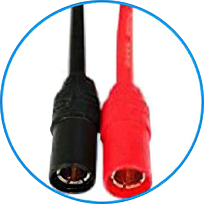
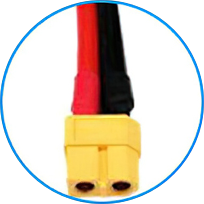
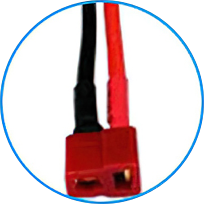
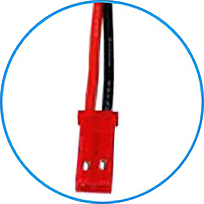
Note: Some lithium battery products are completed in a one-time package, using a special port treatment (such as vacuum cleaner lithium battery), the right side is the interface selection of most products.

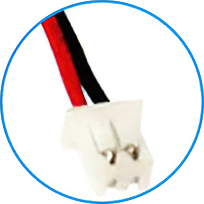
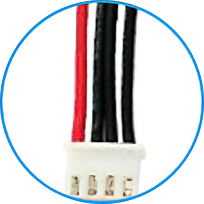
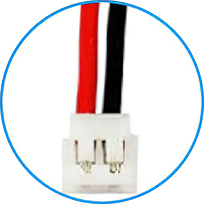
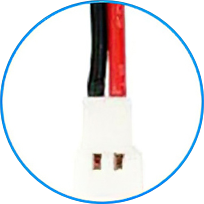
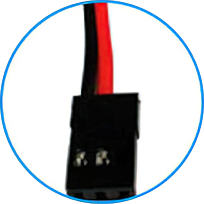
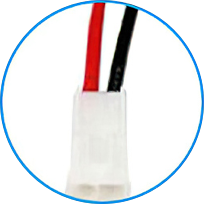
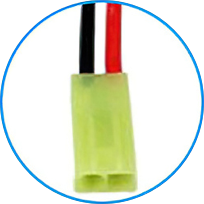

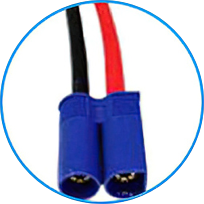
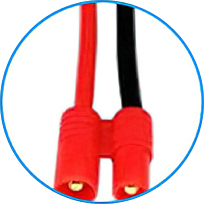
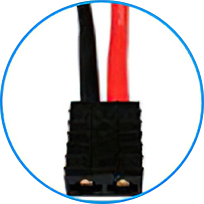
Note: Some lithium battery products are completed in a one-time package, using a special port treatment (such as vacuum cleaner lithium battery, smart door lock lithium battery,etc.), the right side is the interface selection of most products.
Founded in 2019, Vinier Technologies is a company dedicated to battery manufacturing. Focus on the development, production and sales of lithium batteries, lithium battery packs and other products. Various specifications of lithium batteries and battery packs can be customized according to different uses, products and other characteristics of customers.
Company Address: Modern Business Building, 2102B, 3038 Jintian Road, Gangxia Community, Futian Street, Futian District, Shenzhen City, Guangdong Province, China.
Zhongshan Factory: 5th Floor, Building 8, Tianqin Street, Hongkai Road, Wusha Industrial Zone, Henglan Town, Zhongshan City, Guangdong Province, China.
Dongguan Factory: 1 Jiansheng Road, Xiawei, Zhutang Village, Fenggang Town, Dongguan City, Guangdong Province, China.
Copyright © szvenier.com